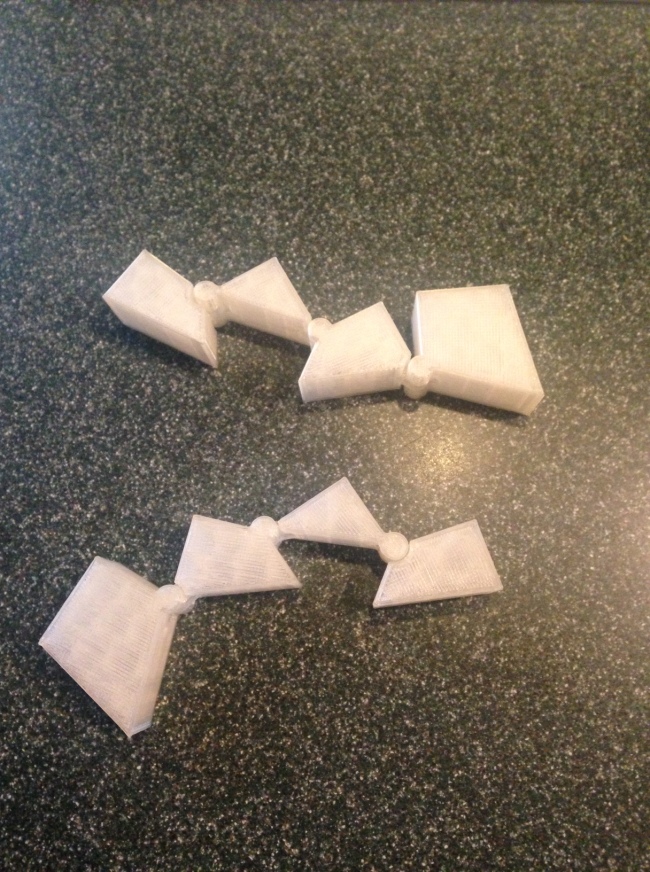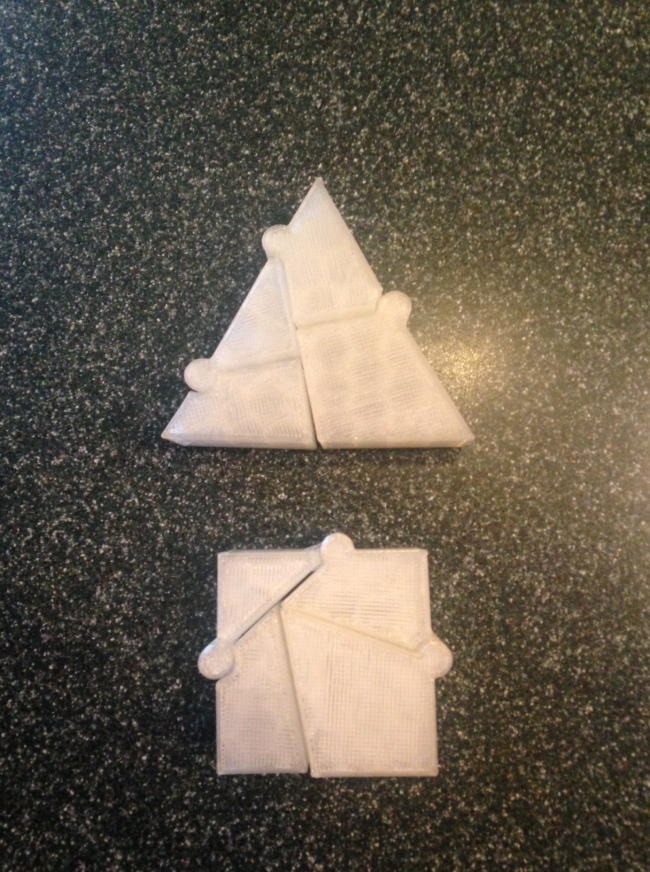About a week ago Dan Meyer posted an interesting geometry problem on his blog and asked for some open-ended feedback. Over the next few days he provided some additional thoughts / content and the resulting discussion was fascinating.
http://blog.mrmeyer.com/2014/confab-circle-square/
I’ve written two prior blog posts about the problem and an extension that was particularly interesting to me. Thanks to an Evelyn Lamb post on Twitter today I saw something new that reminded me of Dan’s problem and made me think of a way to introduce a similar problem to younger students using manipulatives.
Each day since the end of August @mathgrrl has been posting a 3D printing project on the MakerHome blog. The March 2nd post was on Haberdasher’s Problem:
http://makerhome.blogspot.com/2014_03_02_archive.html
These 3D prints from the Haberdasher problem give younger students a way to gain access to Dan’s problem without the need to know any geometry formulas at all. We just need to remove the circle from the original problem and replace it with an equilateral triangle. The new problem would go something like this, but, of course, I’m not suggesting to use this specific abstract mathematical language with younger kids:
Given an arbitrary point P on a line segment AB, let AP form the perimeter of a square and PB form the perimeter of an equilateral triangle. Find P such that the area of the square and triangle are equal.
Here’s what I think I’d do (and I would love to have been able to run through this with my own kids, but a stomach bug had other ideas, unfortunately):
(1) Given the kids these manipulatives and let them play around:
It is pretty amazing that you can form both a square and an equilateral triangle from these hinged shapes. I think it would be fascinating to hear kids who haven’t had much exposure to geometry discuss the various relationships between the shapes (including concepts of area and perimeter) using whatever mathematical language is appropriate for them. The goal isn’t precision or geometry formulas just discussion.
(2) The next would be to introduce the new version of Dan’s problem without the mathematical formality. Several of the commentors on Dan’s original post suggested the idea of cutting a string to form two shapes of equal areas. That formulation of this new problem would work really well here, I think. There’s a new and pretty interesting math challenge at this step relating to scaling. If the string happens to be exactly as long and the combined perimeters of our square and triangle, the kids already have the solution in front of them. However, if the string is a different length, the problem hopefully will lead to a neat discussion about ratios and scaling.
By funny coincidence the correct cut of the string divides it into two pieces roughly equal to 47% and 53% of the original string’s length – almost exactly the same as the two pieces for the original square and circle problem (with a twist!). Maybe that fact would provide an interesting extension, too.
As I said in my prior posts, Dan’s found a really fun problem!


One thought on “Using Manipulatives for a fun twist on Dan Meyer’s geometry problem”